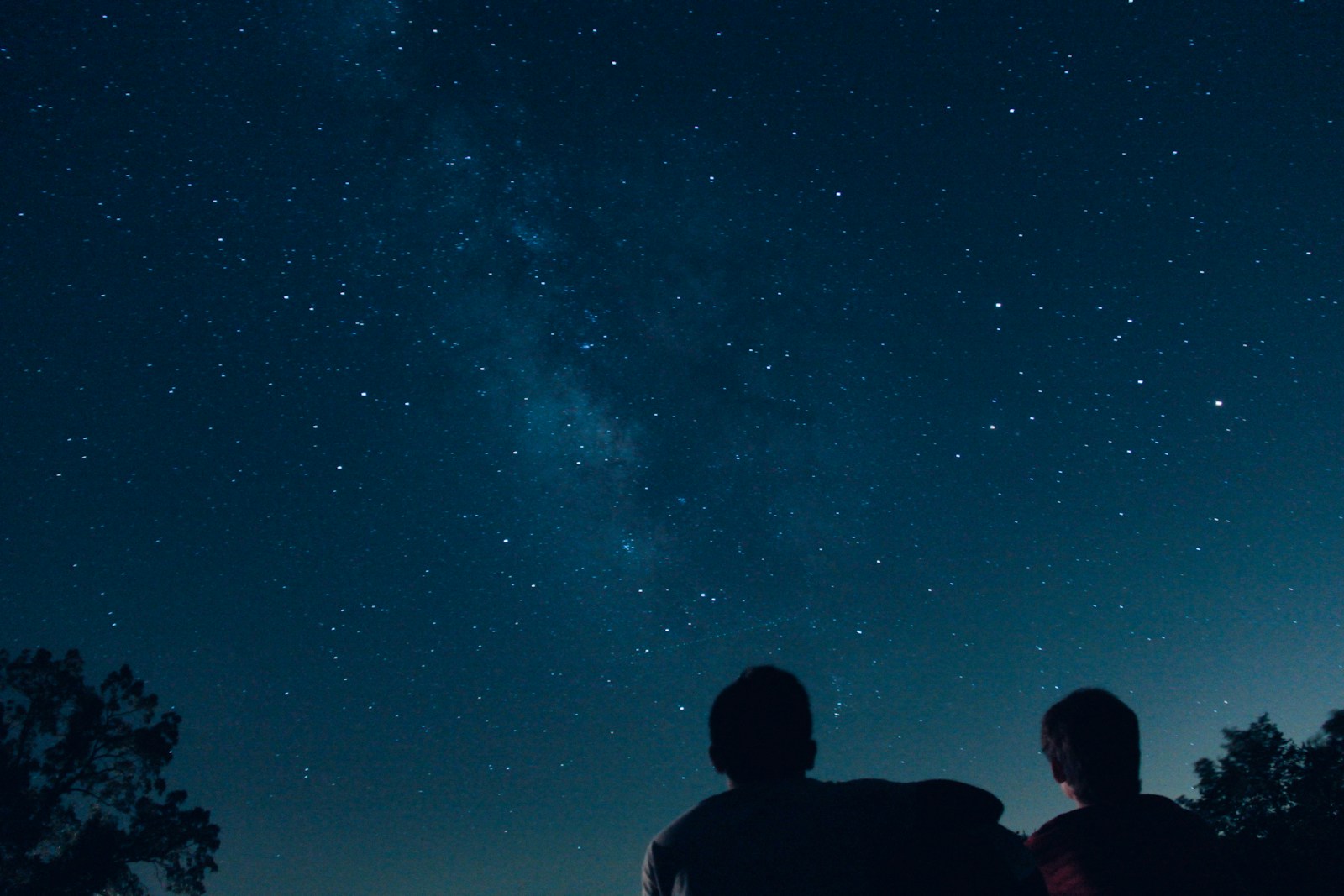When the sun sets and darkness blankets our national parks, a magical transformation occurs. The daytime bustle of tourists gives way to a serene nocturnal world where the Milky Way stretches across the sky and wildlife awakens, filling the night with nature’s symphony. The combination of pristine dark skies and active nocturnal creatures creates an immersive sensory experience unlike any other. For those seeking to connect with nature on a deeper level, stargazing while listening to the calls, howls, and rustles of wildlife offers a profound reminder of our place in the natural world. This guide explores the best national parks where you can experience this perfect marriage of celestial wonders and wildlife sounds.
Death Valley National Park: Desert Symphony Under the Stars
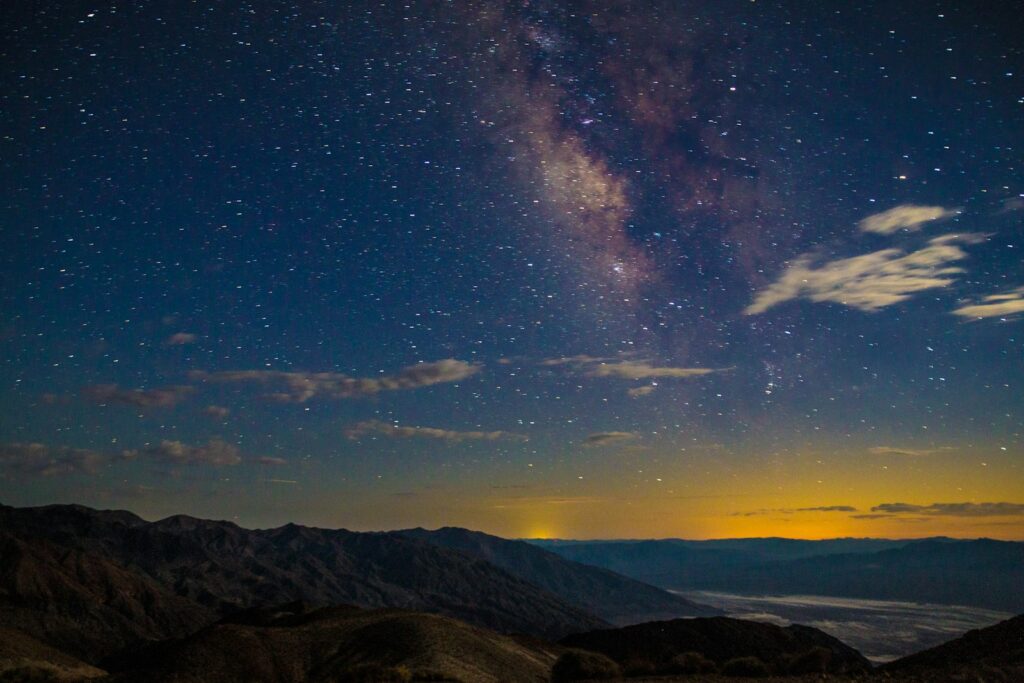
As a certified International Dark Sky Park, Death Valley boasts some of the darkest skies in the United States, ranking as a Gold Tier dark sky location. The park’s remote location and low humidity create exceptional transparency in the night sky, allowing for extraordinary visibility of celestial objects including meteor showers, planets, and the full splendor of the Milky Way. While stargazing from spots like Dante’s View or Badwater Basin, visitors might hear the distinctive yips and howls of coyote packs communicating across the valley. The gentle rustling of kangaroo rats darting across the desert floor adds a subtle percussion to the night, while the occasional hoot of a great horned owl punctuates the darkness with mysterious resonance. Spring visitors might be treated to the surprisingly loud calls of the small but vocal spadefoot toads that emerge after rare desert rains.
Grand Canyon National Park: Celestial Views with Canyon Echoes
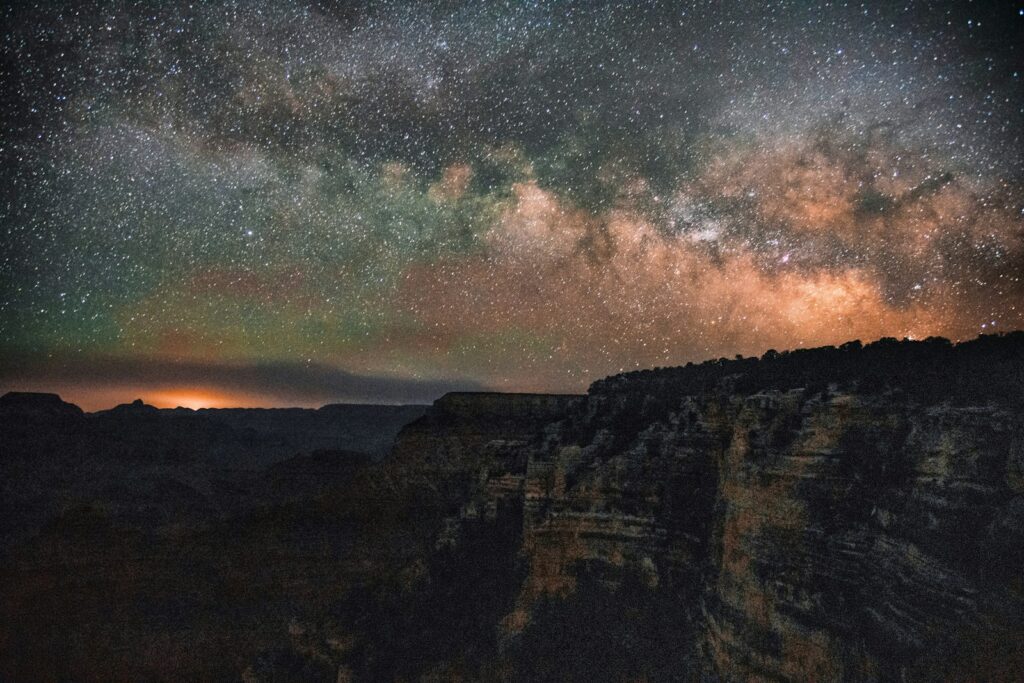
The Grand Canyon’s vast expanse offers a dramatic setting for stargazing, with the canyon walls framing the night sky like a natural planetarium. The park runs a dedicated night sky program at Yavapai Point, where rangers guide visitors through constellations visible above the ancient landscape. The acoustic environment of the canyon creates fascinating sound dynamics, with wildlife calls echoing off the massive rock walls. California condors, with their impressive 9-foot wingspan, sometimes roost in canyon ledges, occasionally calling out with distinctive guttural sounds during dawn and dusk transitions. The haunting calls of great horned owls reverberate through the canyon, while the playful yips of foxes and coyotes create a multi-layered soundscape. During summer monsoon season, the distant rumble of thunderstorms adds dramatic bass notes to this natural concert.
Big Bend National Park: Border Stars with Desert Melodies
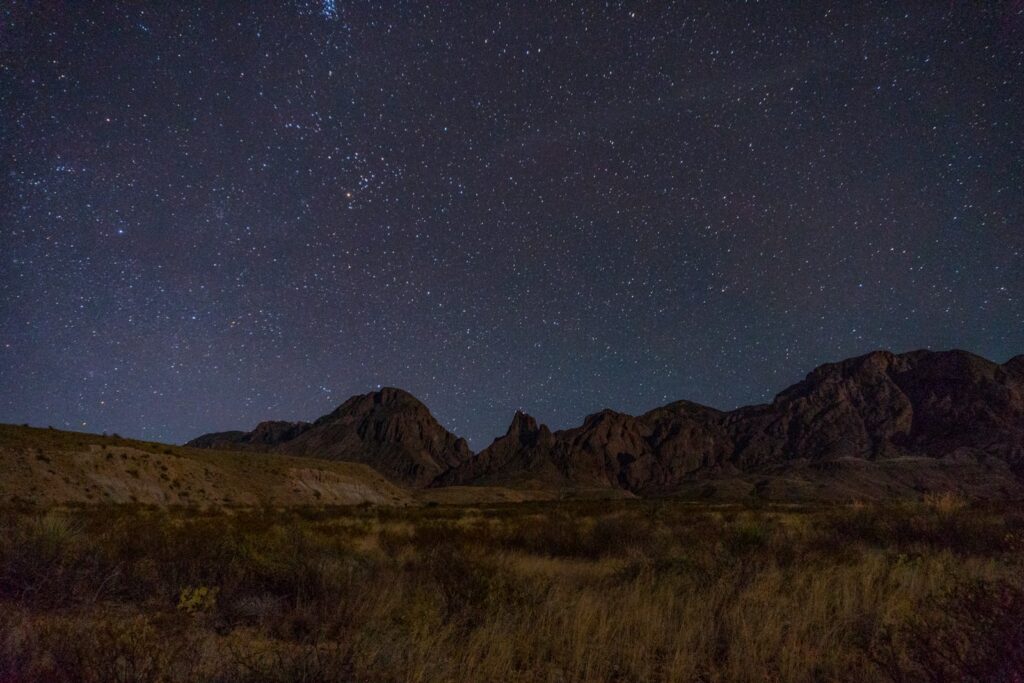
Tucked away in the remote corner of Texas along the Mexican border, Big Bend National Park offers exceptional dark skies that showcase the stars with remarkable clarity and brilliance. The park’s isolation from major cities minimizes light pollution, allowing visitors to see thousands of stars, planets, and even satellite passes with the naked eye. The Rio Grande creates a ribbon of habitat through the desert, attracting a diverse array of vocal wildlife that becomes especially active at night. Visitors might hear the distinctive trills of spadefoot toads emerging after summer rains, creating amphibian choruses that can reach surprising volumes. The eerie, laugh-like calls of coyotes often echo across the Chihuahuan Desert landscape, while the distinctive hoots of elf owls—the world’s smallest owls—add delicate notes to the nocturnal soundscape. Lucky visitors might even hear the rare mountain lion screams that sound remarkably human-like and send chills down the spine.
Bryce Canyon National Park: Hoodoo Silhouettes and Forest Sounds
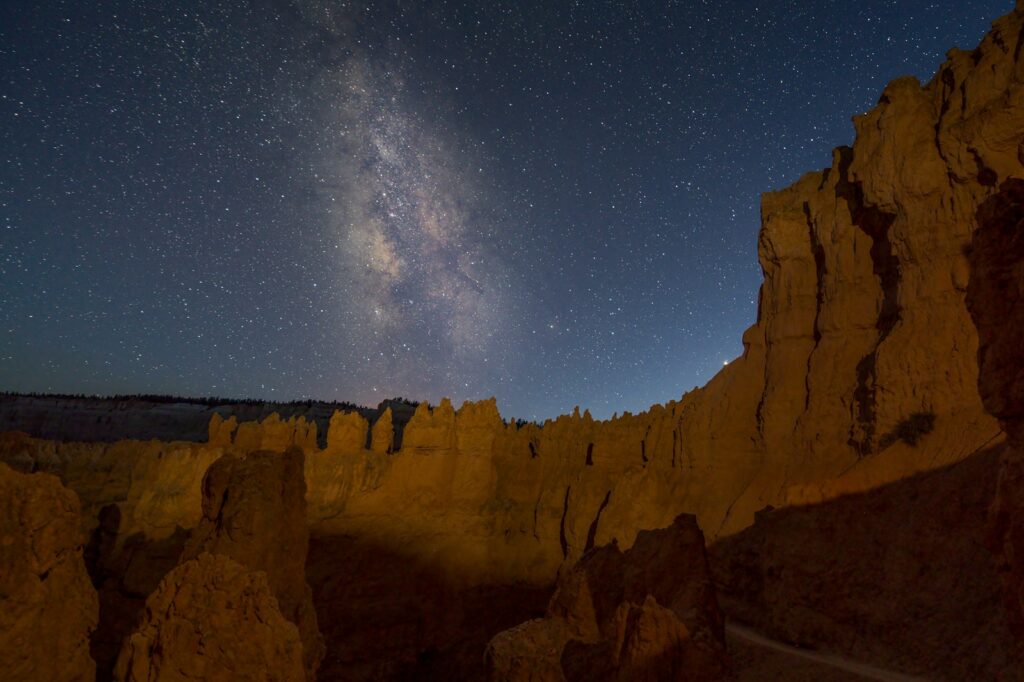
Bryce Canyon’s famous hoodoo rock formations create an otherworldly foreground for spectacular stargazing opportunities, with the unusual shapes silhouetted against the brilliant night sky. Located at a high elevation (8,000-9,000 feet) with extremely clean, dry air, Bryce offers exceptional astronomical viewing conditions and hosts regular astronomy programs led by trained “Dark Rangers.” The park’s mix of forests and canyons creates diverse habitat for vocal wildlife that becomes especially active after sunset. Great Basin rattlesnakes sometimes announce their presence with warning rattles that echo off canyon walls, reminding visitors to watch their step even at night. The distinctive five-part hooting pattern of the great horned owl reverberates through the forests of ponderosa pine, while the high-pitched, complex songs of poorwills—relatives of the whippoorwill—provide continuous evening entertainment. During summer months, the park’s prairie dog colonies occasionally vocalize even after dark, adding their distinctive barks to the night soundscape.
Glacier National Park: Northern Lights and Mountain Melodies
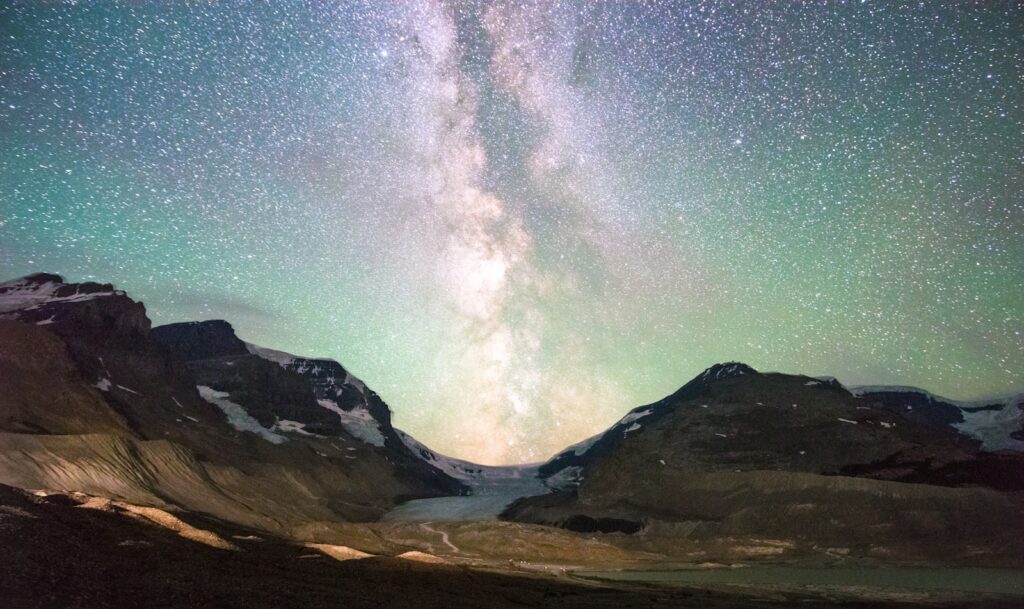
Glacier National Park’s northern location makes it one of the few parks in the contiguous United States where visitors have a reasonable chance of witnessing the northern lights, especially during periods of increased solar activity. The park’s remote location along the Canadian border ensures minimal light pollution, while its diverse ecosystem supports an impressive array of vocal wildlife. Visitors stargazing at Logan Pass or Lake McDonald might hear the haunting howls of wolf packs echoing through mountain valleys, a sound that has only returned to the park in recent decades. The bugling of bull elk during the fall rut creates an unforgettable soundtrack for autumn stargazing, with the high-pitched calls carrying for miles across alpine meadows. The slapping of beaver tails on water surfaces creates distinctive echoes around lakes and ponds, serving as warning signals to other members of their colonies. Year-round residents like great gray owls contribute their deep, resonant hooting patterns that seem perfectly suited to the park’s vast wilderness.
Joshua Tree National Park: Desert Stars with Nocturnal Chorus
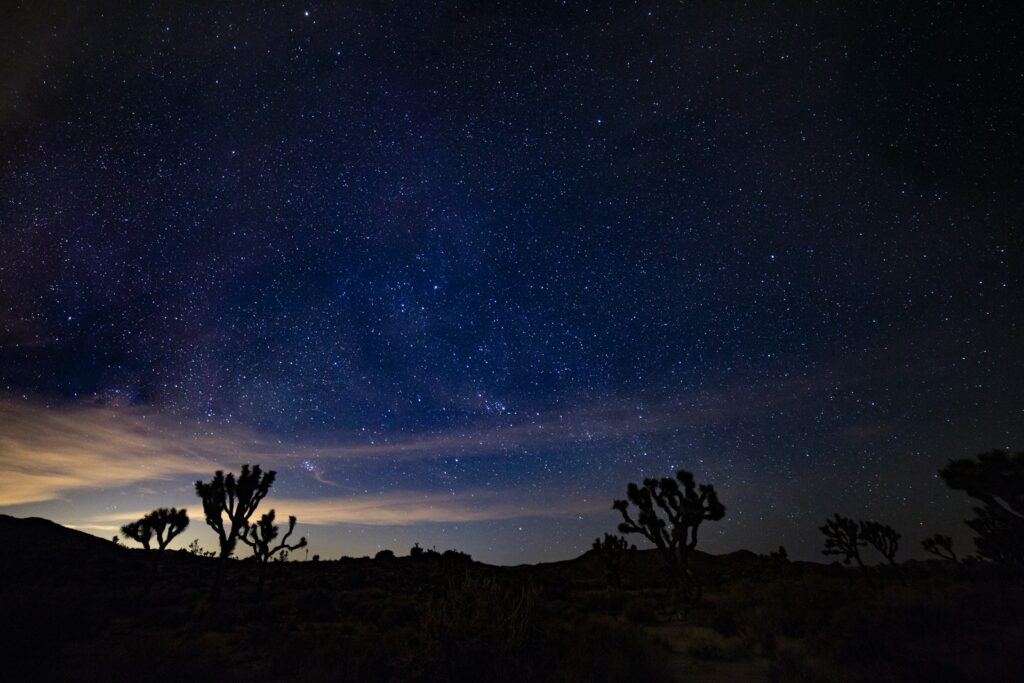
Joshua Tree’s unique position at the intersection of the Mojave and Colorado deserts creates a distinctive ecosystem that supports specialized desert wildlife, active primarily during nighttime hours. The park’s low humidity and high desert elevation contribute to exceptionally clear night skies, with the twisted, sculptural forms of Joshua trees creating distinctive silhouettes against the star-filled backdrop. Despite its proximity to Los Angeles, the park maintains remarkably dark skies, especially in its eastern sections. The distinctive calls of great horned owls echo through rocky canyons, while the high-pitched chirps of desert kangaroo rats communicate territorial boundaries as they forage among the creosote bushes. Spring brings an explosion of insect life, with the rhythmic chirping of crickets and katydids creating a continuous soundscape that ebbs and flows throughout the night. During breeding season, the rapid “top-top-top” calls of male desert tortoises can sometimes be heard as they seek mates in the cool evening hours.
Great Basin National Park: Ancient Trees Under Pristine Skies
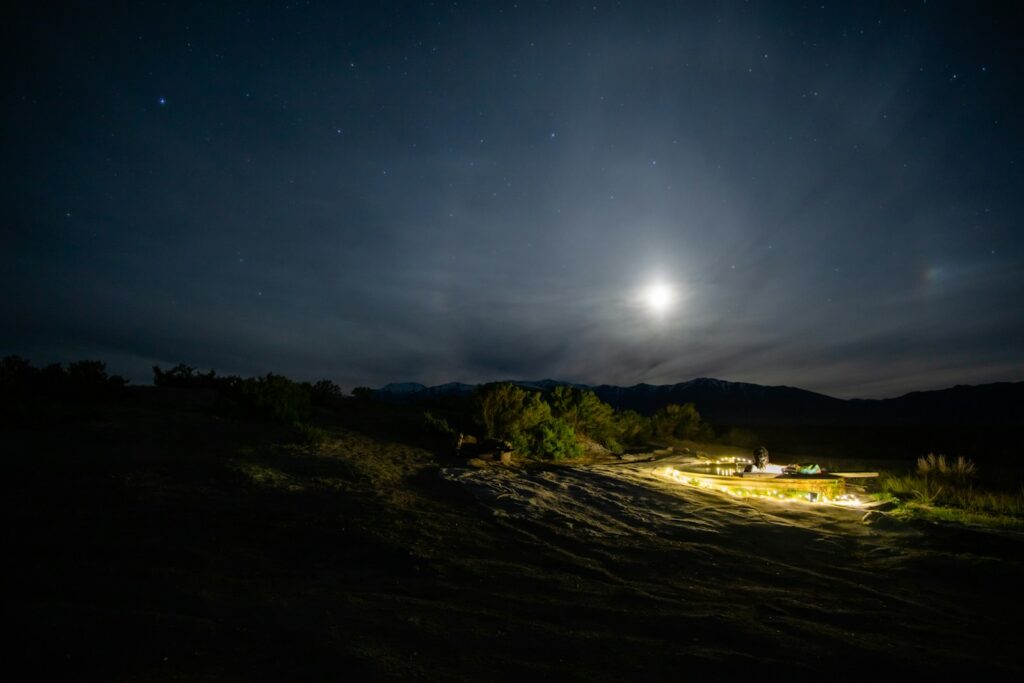
Great Basin National Park stands as a premier dark sky destination, having earned International Dark Sky Park status due to its exceptional night sky quality and ongoing efforts to minimize light pollution. The park’s location in remote eastern Nevada ensures minimal interference from artificial light, allowing visitors to see celestial features rarely visible elsewhere, including the Andromeda Galaxy with the naked eye. The park’s ancient bristlecone pine groves, containing some of the oldest living organisms on Earth, provide a thought-provoking foreground for contemplative stargazing. Mule deer move through these ancient forests at night, their hooves occasionally snapping twigs and creating gentle rustling sounds that complement the visual experience. The park’s limestone caves and rocky outcroppings support several bat species that emerge at dusk, their high-frequency echolocation calls sometimes becoming audible as they hunt insects above meadows and water sources. During summer months, the distinctive droning of cicadas continues into early evening hours, providing a meditative background soundtrack for early stargazing sessions.
Rocky Mountain National Park: Alpine Stargazing with Elk Serenades
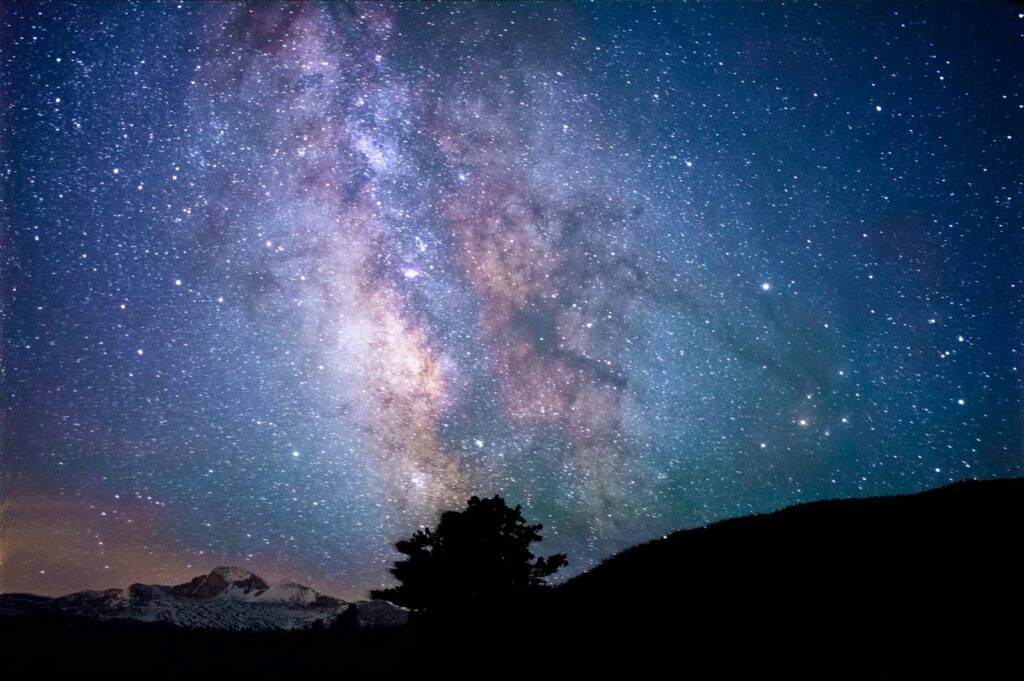
Rocky Mountain National Park offers stunning high-altitude stargazing opportunities, with several easily accessible locations above treeline where light pollution is minimal and the Milky Way stretches dramatically overhead. The park’s varied ecosystems, from montane forests to alpine tundra, support diverse wildlife populations that become vocal during nighttime hours. During the fall rut season (September-October), bull elk produce magnificent bugling calls that echo through valleys and meadows, creating one of North America’s most distinctive and powerful wildlife sounds. These haunting calls, which can range from deep grunts to high-pitched screams, provide an unforgettable accompaniment to autumn stargazing. The park’s healthy coyote population communicates through complex vocalizations that include yips, barks, and howls, with family groups sometimes creating choruses that seem to involve sophisticated call-and-response patterns. At higher elevations, the distinctive chirping of yellow-bellied marmots occasionally continues into evening hours during summer months, while the rustle of pine martens moving through coniferous branches adds subtle texture to the night soundscape.
Voyageurs National Park: Northern Waters Under Starry Skies
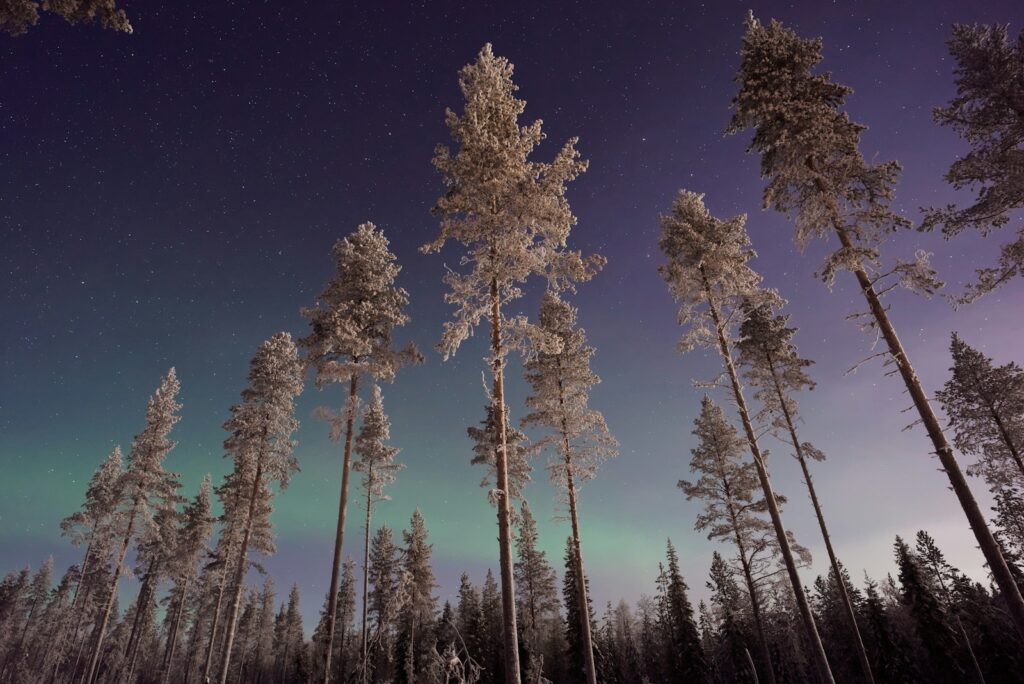
Named after the French-Canadian fur traders who traveled its waterways, Voyageurs National Park in northern Minnesota offers exceptional stargazing opportunities across its extensive network of lakes and islands. The park’s designation as an International Dark Sky Park in 2020 recognized its commitment to protecting the night sky and educating visitors about light pollution. Voyageurs’ northern location makes it another excellent spot for potential aurora borealis sightings, especially during winter months when darkness extends for up to 14 hours. The park’s extensive water features create unique acoustics, with sounds carrying clearly across still lakes on calm nights. The eerie, wavering calls of common loons echo across the water surfaces, creating one of the most distinctive and primitive-sounding vocalizations in the natural world. Wolf howls occasionally ripple through the boreal forest, with pack members communicating across considerable distances and sometimes initiating howling sessions that last for several minutes. Beavers slap their broad tails against water surfaces as warning signals, creating sharp echoing reports that can startle first-time visitors but delight wildlife enthusiasts.
Grand Teton National Park: Mountain Silhouettes with Wildlife Symphony
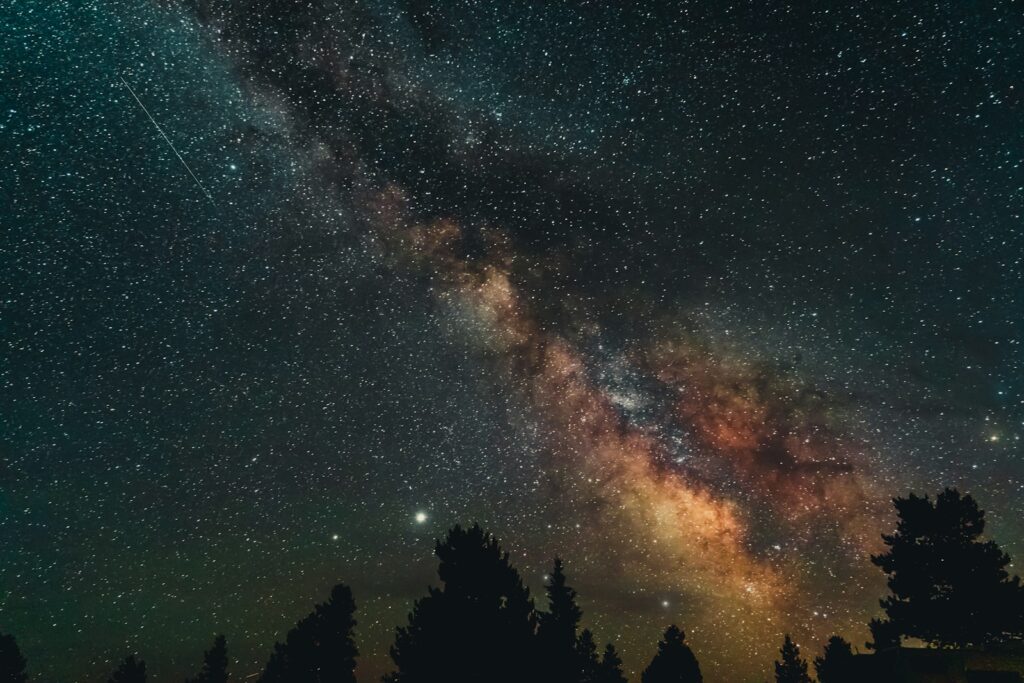
The jagged peaks of the Teton Range create one of the most dramatic mountain skylines in North America, forming a stunning foreground for stargazing that gives photographs from this park an instantly recognizable character. The park’s proximity to Jackson Hole means some light pollution from the south, but views facing north and west offer excellent dark sky opportunities, especially at locations like Oxbow Bend and Schwabacher Landing. Grand Teton supports extraordinary wildlife diversity, including vocal species that become active during nighttime hours. Moose move through riverside willow thickets at night, creating distinctive splashing sounds as they wade through shallow waters and tear vegetation with their powerful jaws. The fluting calls of hermit thrushes often continue into early evening hours during summer months, providing one of North America’s most melodious bird songs as background music for early stargazing. During spring and summer, the loud “plunk” of beaver tails slapping water surfaces echoes across ponds and slow-moving river sections, while the occasional elk bugle might be heard during fall months when the rut coincides with relatively dark evening skies.
Acadia National Park: Coastal Stars with Ocean Rhythms
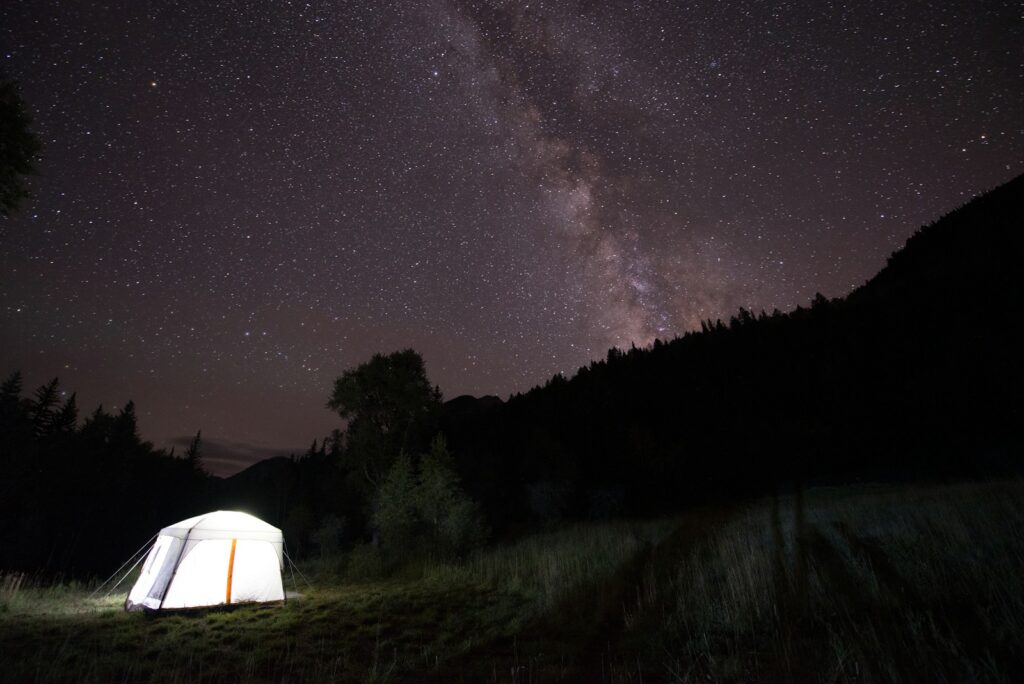
As the first national park established east of the Mississippi River, Acadia offers the rare combination of dark skies, mountain views, and ocean sounds in one location. While light pollution is more significant than at western parks, Acadia’s coastal position on Maine’s Mount Desert Island creates excellent stargazing opportunities, especially from locations like Cadillac Mountain and the park’s rocky shorelines. The park hosts the popular Acadia Night Sky Festival each September, celebrating the region’s astronomical heritage and ongoing dark sky preservation efforts. The rhythmic sounds of ocean waves provide a continuous backdrop for stargazing along coastal sections, with the intensity changing based on tidal patterns and weather conditions. Harbor seals frequently vocalize from offshore rocks and islands, their calls resembling plaintive human cries that can be slightly unnerving to uninitiated listeners. Barred owls maintain active territories throughout the park’s forests, their distinctive “who-cooks-for-you” hooting pattern creating a quintessential nighttime forest sound. During summer months, the park’s healthy population of beavers becomes active in evening hours, with tail slaps and branch-dragging creating distinctive water and vegetation sounds around ponds and streams.
Great Smoky Mountains National Park: Fireflies and Forest Chorus

While the Great Smoky Mountains experience more light pollution than western parks due to surrounding development, specific areas still offer good stargazing opportunities, especially at higher elevations like Clingmans Dome and Newfound Gap. What makes this park truly special for nocturnal experiences is the combination of synchronous fireflies (which flash in unison for about two weeks each June) and the extraordinary diversity of amphibian sounds. The park’s status as the “Salamander Capital of the World” extends to remarkable vocal diversity among frogs and toads, creating one of the most complex natural sound environments in the national park system. Spring “frog choruses” can reach astonishing volumes, with green frogs, gray treefrogs, American toads, and spring peepers creating layered symphonies that peak during breeding season. Eastern whip-poor-wills contribute their namesake calls during summer evenings, sometimes continuing for hours with their rhythmic, repetitive phrases that Native Americans once interpreted as spirit voices. The park’s healthy owl population, including barred, great horned, and eastern screech owls, adds diverse hooting patterns that echo through the mature hardwood forests, creating a multidimensional nocturnal soundscape.
Everglades National Park: Subtropical Stars with Primal Sounds
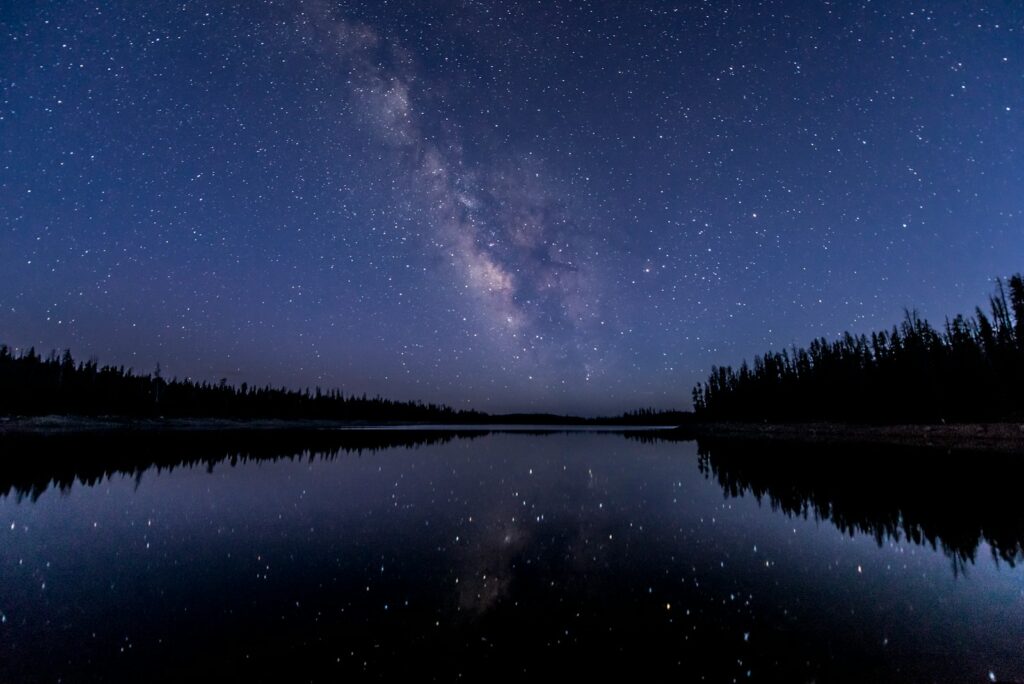
While Florida’s extensive development creates light pollution challenges, the vast expanse of Everglades National Park still offers good stargazing opportunities, especially in its more remote southern sections accessible from Flamingo Visitor Center. The park’s subtropical environment supports extraordinary biodiversity, including some of North America’s most vocal wildlife species that become especially active during nighttime hours. American alligators produce deep bellowing calls during breeding season that can be felt as much as heard, with low-frequency vibrations carrying across still waters and sometimes causing ripples on the water surface. The diverse frog chorus of the Everglades includes distinctive species like pig frogs, whose grunting calls genuinely resemble farmyard pigs, and barking treefrogs, whose voices carry remarkably well across grassy wetlands. During winter months when humidity levels drop, the night sky clarity improves significantly, coinciding with the arrival of migratory birds whose calls add new dimensions to the nocturnal soundscape. Wading birds like night-herons become vocally active during darkness, with their squawking calls announcing fishing activities along shallow waterways illuminated by starlight.
Conclusion
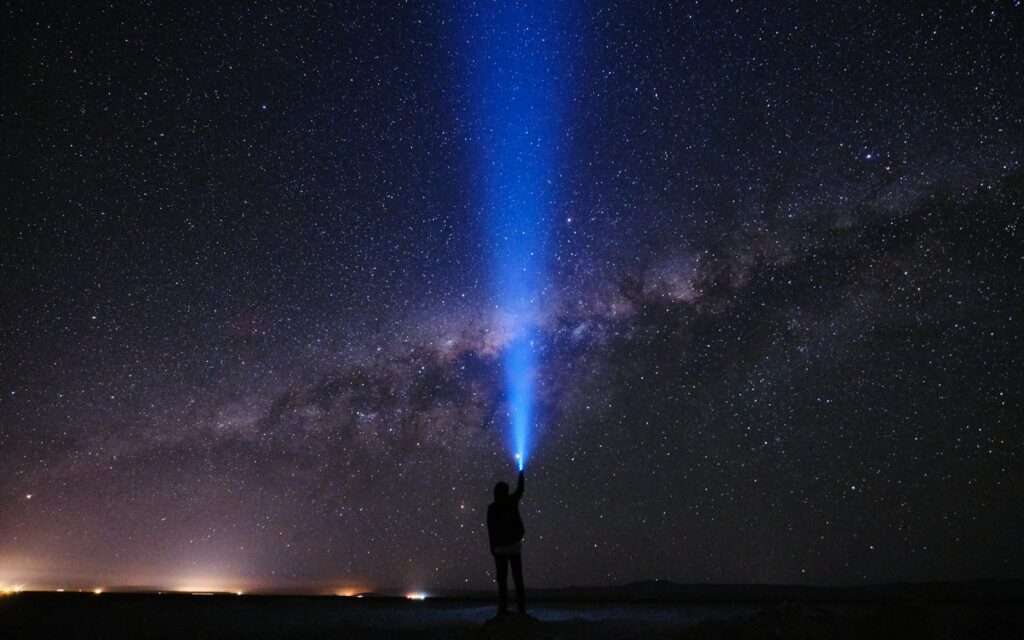
The combination of stargazing and wildlife listening offers a multisensory connection to nature that engages our most primal senses. As artificial light increasingly dominates our urban environments, these dark sky sanctuaries become ever more precious. Beyond the simple pleasure of seeing stars and hearing animals, these experiences offer something deeper—a chance to reconnect with natural rhythms and cosmic perspectives that have shaped human experience for millennia. Whether you’re listening to wolf howls under the northern lights in Glacier or alligator bellows beneath the stars in the Everglades, these moments remind us of our place within the greater web of life on our planet. By seeking out these experiences, we not only enrich our own lives but also support conservation efforts that protect both dark skies and biodiversity for future generations.

